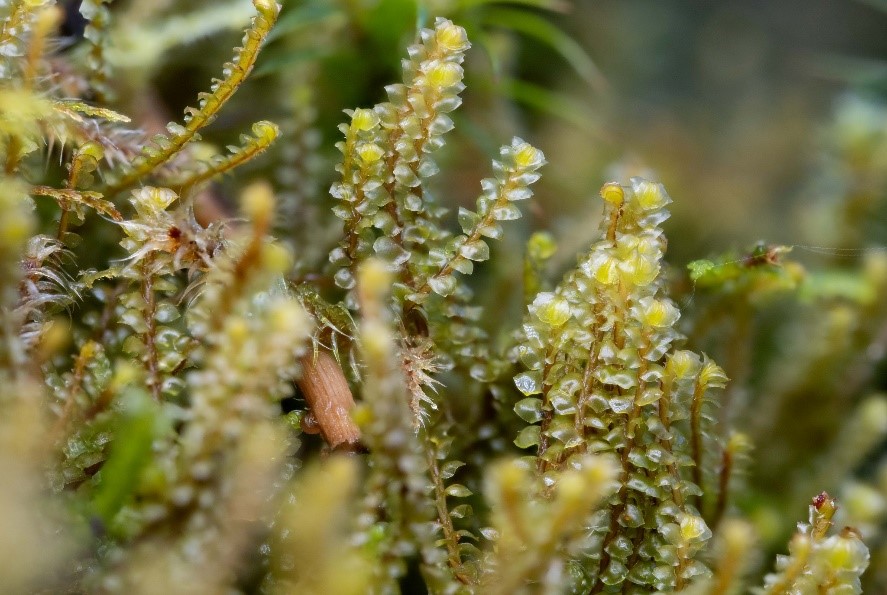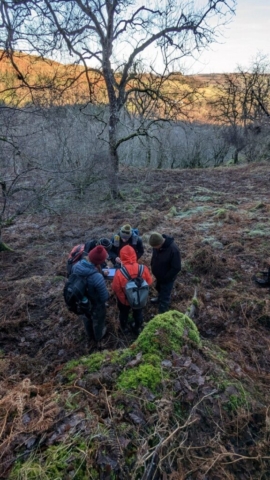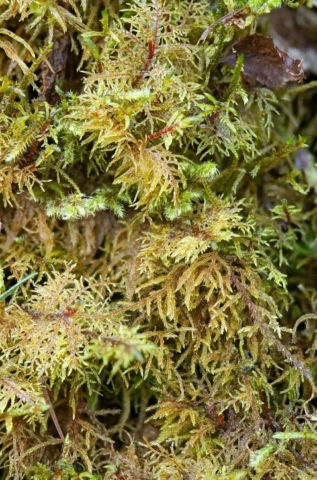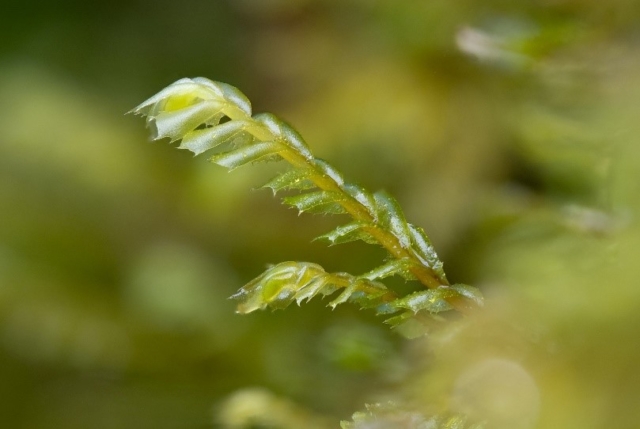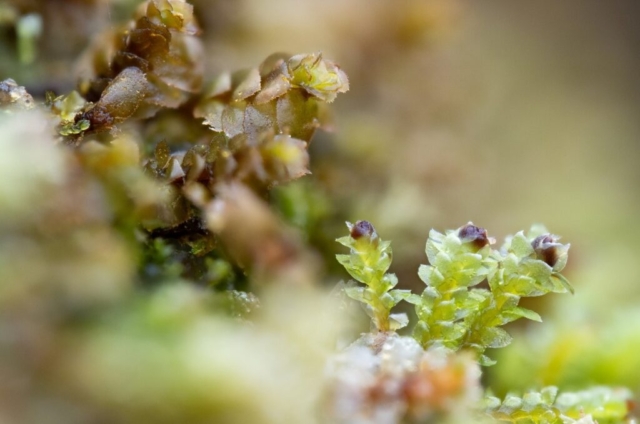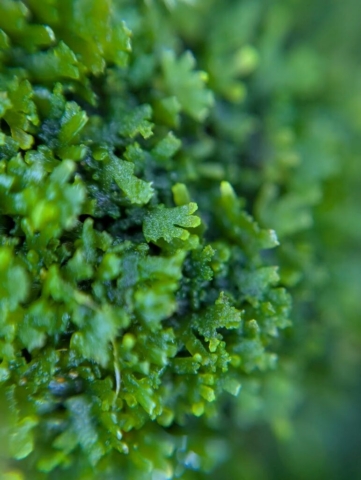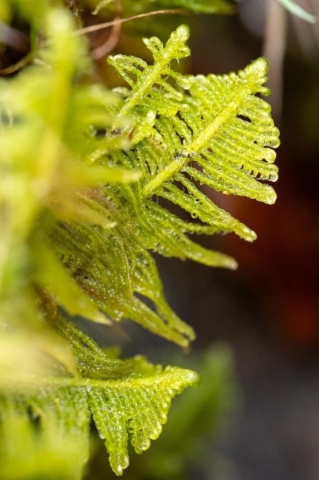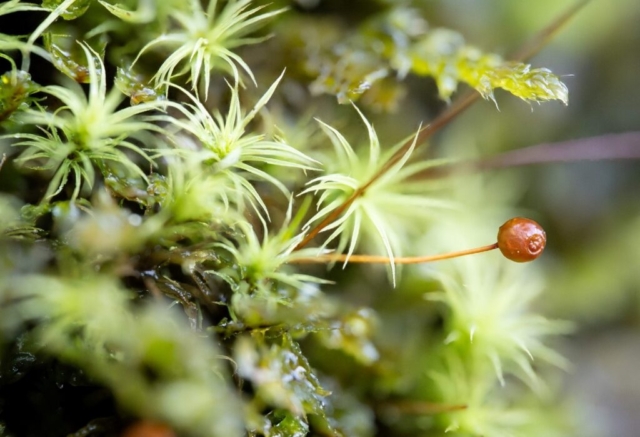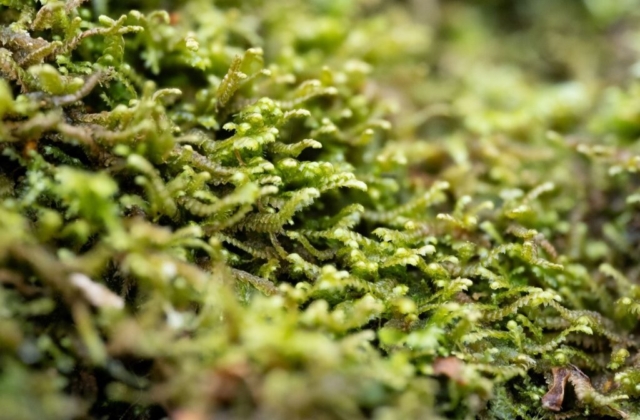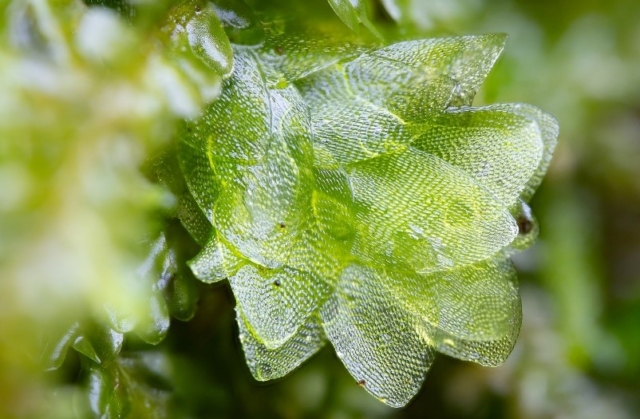The January meet fell on a particularly sunny, and comparatively warm, day with only the slushy roads, and snow on the distant hills, hinting at the wintery conditions of the past few weeks. Another great turn out included a mix of experienced and newer learners, keen to expand their knowledge. We met by Haweswater and took a short walk along the road into Naddle Forest where we would spend the day. The woods are a great example of ancient relic forest, boasting a wealth of lichen and bryophyte species.
The Bryologists soon peeled off, climbing the steep slopes to examine a rock face which presented a good range of mosses and liverworts. A few common woodland species were quickly ticked off: Cirriphyllum piliferum, Hylocomiadelphus triquetrus and Rhytidiadelphus loreus. As represented by these first few species, there was a mixture of acid and calcareous species to be found throughout the site, hinting at the habitat mosaic.
Such a rich assemblage provided a good opportunity to compare some common pleurocarps. Paul gave a useful explanation of the differences between Loeskeobryum brevirostre, Hylocomiastrum umbratum and Hylocomium splendens. Although they are all large, red-stemmed pleurocarps, Hylocomium splendens is the most regularly branched of the three and has oval stem leaves with a long, tapering tip. The stem leaves of Hylocomiastrum umbratum and Loeskeobryum brevirostre are broadly triangular, but H. umbratum leaves are heavily pleated, distinguishing it from L. brevirostre which is a larger moss, and its leaves stick out, giving it a chaffy appearance.
With our heads now thoroughly in bryophyte mode, we moved upwards and came across the first of four Plagiochila species to be found; Plagiochila asplenoides. As the largest of the Plagiochila species, it clearly displays the characteristic convex, translucent leaves. After recording P. porelloides, which you could be fooled into thinking is simply a smaller version of P. asplenoides, we found our third species: P. spinulosa, which is an excellent example of an Oceanic indicator. Quick to differentiate from earlier species by the irregular teeth at the tip and back margin of the leaf, it bears more resemblance to our fourth species (read on!).
Another oceanic indicator was soon happened-upon, identified by its slightly untidy appearance and yellow-brownish colour: Scapania gracilis. These species like dry, sheltered areas within high rainfall habitats. Protected from temperature and weather extremes, S. gracilis thrives in these humid, acidic habitats. A less common oceanic indicator is Anastrepta orcadensis, so we were excited to find some quite large patches of this; surprisingly, we didn’t come across any more in the rest of the day.
After lunch we continued uphill and inadvertently split up into a few smaller groups to explore the crags and deadwood that littered the area. The habitat here was very similar to the morning, and the trees heralded woodland classics such as Frullania dilatata and Frullania tamarisci, two epiphytes that can be separated based on their growth form (appressed to trunk versus forming loose wefts) and their lobule shapes (helmet shaped versus small/long). While the area may not be considered as oceanic as some of the traditional oak woodlands in the western lakes, many interesting species continued to make their appearance. From the lovely looking Lophozia ventriculosa with green-gemmae-tipped bilobed leaves to the tiny, rusty coloured deadwood species Cephalozia curvifolia (previously Nowellia curvifolia), our list continued to grow at a rapid rate from relatively few micro-habitats.
Of particular interest was Schistochilopsis incisa found growing out of a heavily decaying log, (yet) another liverwort that forms a zag-zag pattern of jagged bi-lobed leaves on wet peats and decaying materials. In the same habitat was Riccardia palmata, growing profusely, and small amounts of Scapania umbrosa, the commonest of the ‘small’ Scapania species. This can be easily identified by the pale green to brownish colour and bright red gemmae present – but this proved challenging on the day as most had washed away in the rainy Cumbria weather!
As we climbed higher still up the slopes, we were able to regroup for a chat (and snack) around a calcareous woodland flush where the final push for species was revitalised by the change in habitat. Always great to find, Ptilium crista-castrensis (Ostrich plume feather moss) poked its feathers out from around a rock and on the damper ground around the flushes were ample patches of Hookeria lucens, a lovely liverwort-like moss with flattened, shiny leaves, and Fissidens dubius, a species easily distinguished from other Fissidens by its larger size and pale leaf margins.
With daylight fading fast on our steep north-facing slope, a last push into the crags by Kerry and Paul found Spinulosa punctata, Frullania fragilifolia and Bazzania tricrenata, all great indicators of oceanic climate and conveniently positioned close to the community associate Hymenophyllum wilsonii (Wilson’s filmy fern). So, while there are those that might tell you Haweswater isn’t ‘oceanic’ enough for a good moss hunt, here’s hoping our discoveries might convince you otherwise! Thanks to everyone that attended, and we look forward to seeing you all again in February.
Text: Beth Taylor and Josie Niemira
